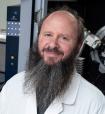

Showing 1821 - 1840 of 2115 results


Role at ANSTO

Role at ANSTO

Role at ANSTO

Krishant holds a PhD in Medicinal Chemistry, specialising in the design and development of novel platinum(IV)-based anticancer agents, where he has contributed to the development of a new class of compounds that is currently undergoing p

Tara Djokic is a geologist currently based in the Palaeontology Department of the Australian Museum Research Institute where she is investigating the fossilisation processes of an 11-16 million-year-old rainforest-lake deposit from central N

Role at ANSTO

Role at ANSTO
Sharing expertise with Japan
The National Deuteration facility is assisting with the establishment of a Japanese Chemical Deuteration Facility.
Australian planetary scientists congratulate NASA after Juno enters Jupiter's orbit
Nuclear tech helps power Perseverance Rover on Mars
A large international research team led by Academia Sinica in Taiwan investigated how heat is transferred in an advanced thermoelectric material made with germanium (Ge) and tellurium (Te) and doped with antimony (Sb). These devices are used to power space probes such as the Mars Curiosity Rover.

Bilby - Small Angle Neutron Scattering
The instrument is very well suited for the study of kinetic effects, like relaxation following a chemical reaction, or external impulses like mechanical deformation, an electric or magnetic field.
Grant funds a search for the precursors of life on icy Titan
ANSTO will participate in a New Zealand Marsden project which will search for chemical clues linked to the origins of life on Titan, Saturn’s largest moon.
2019 Shorebirds Competition Summary and Results
From June to August we invited primary schools in Greater Sydney/Illawarra and Melbourne to participate in our 2019 Shorebirds Competition. Students in Years 3 to 6 were asked to create a public awareness poster for a threatened shorebird found in Australia.
Neutrinos, atomic clocks and an experiment to detect a time dilation
Griffith University researchers are conducting an experiment at ANSTO that will test a revolutionary physics theory that time reversal symmetry-breaking by neutrinos might cause a time dilation at the quantum scale.

Travel Funding
The Australian Synchrotron provides funding support for successful beamtime applicants in the form of travel funding and/or onsite accommodation. Travel funds granted are to be used solely to cover the majority of the cost to travel to the AS facility. The User Office will book accommodation for interstate user groups at the onsite AS Guesthouse.

Role at ANSTO

Role at ANSTO

Role at ANSTO

Role at ANSTO
Nick is a radiation biologist who works for the NST Human Health research theme.